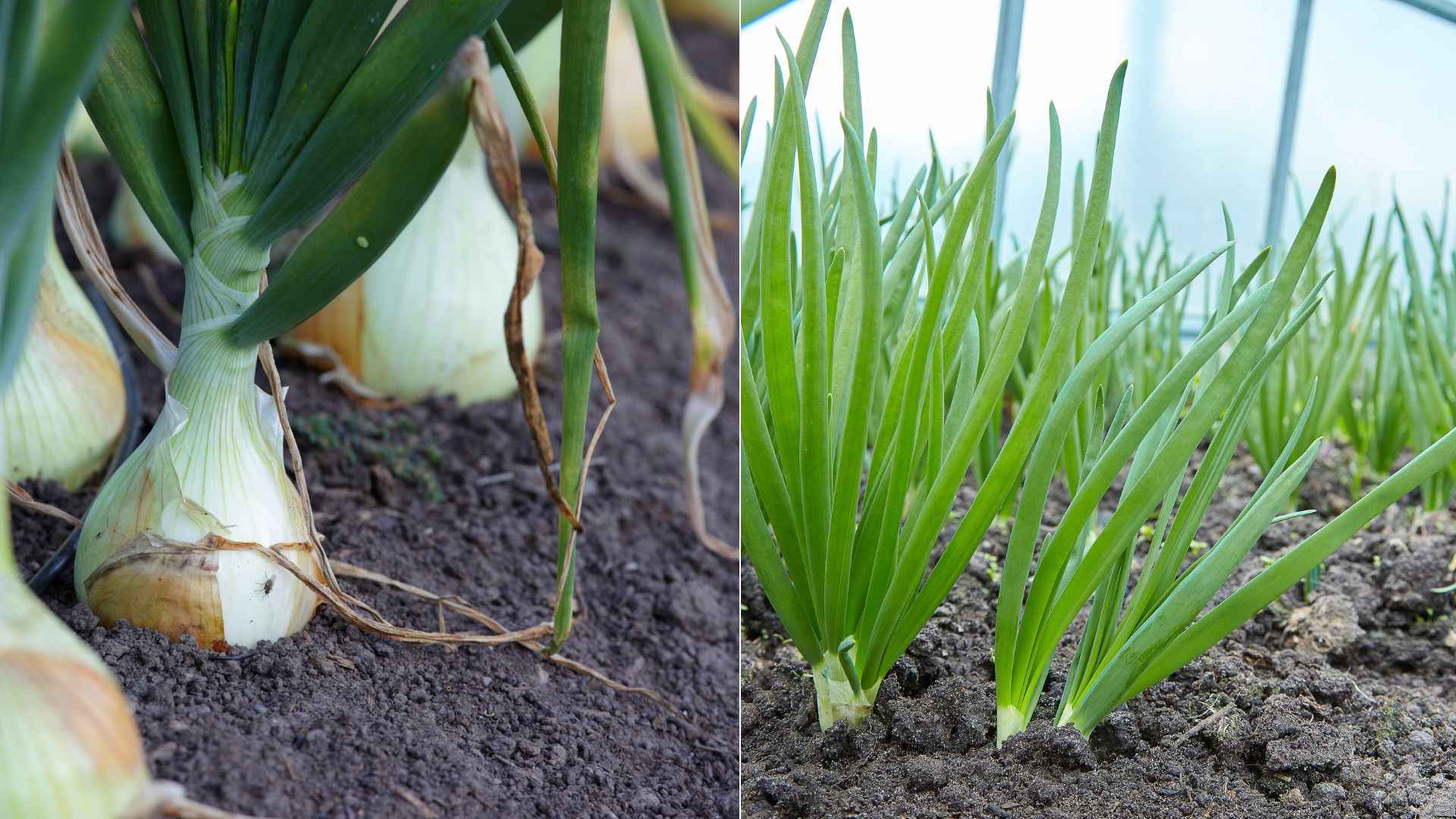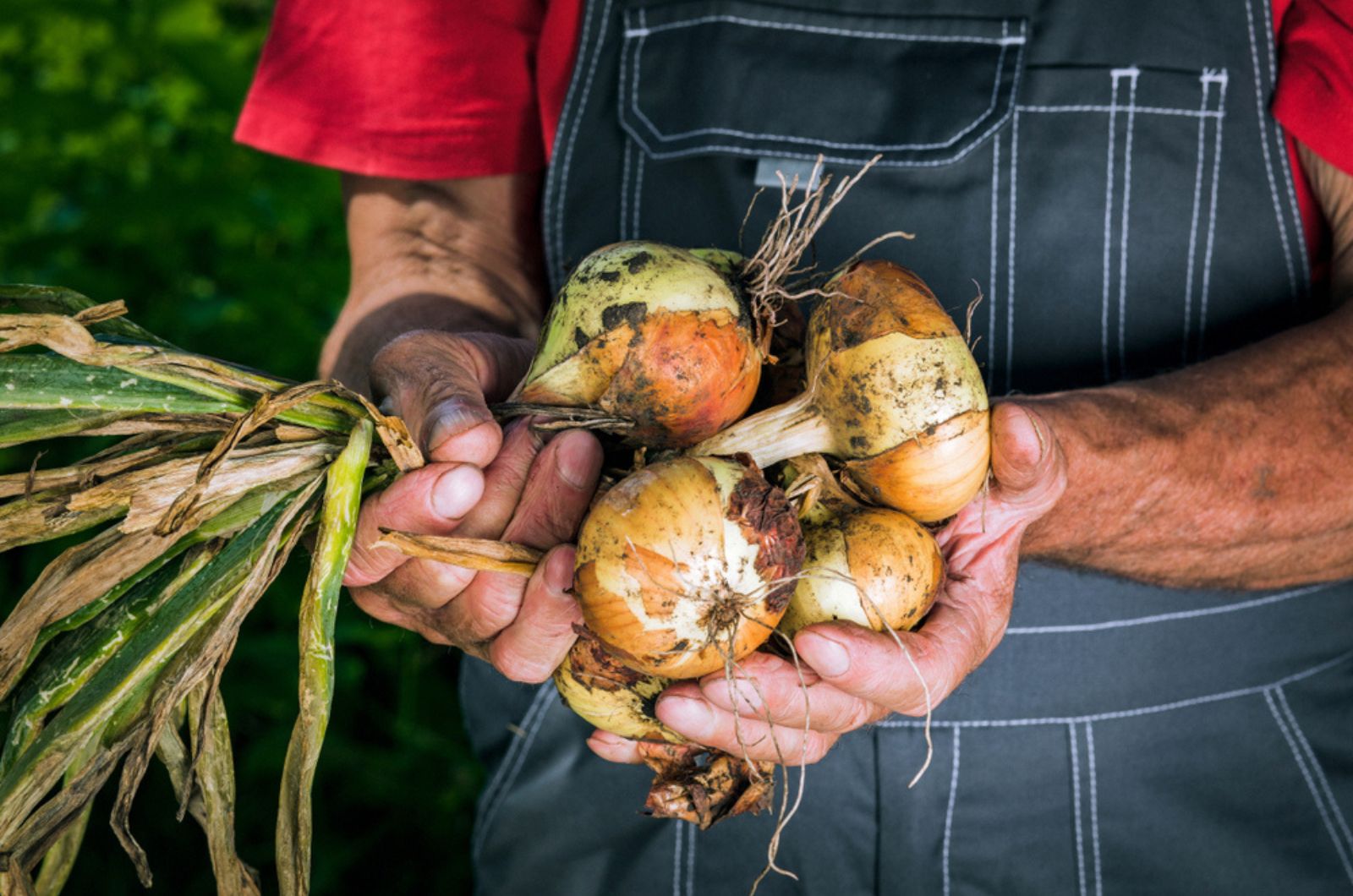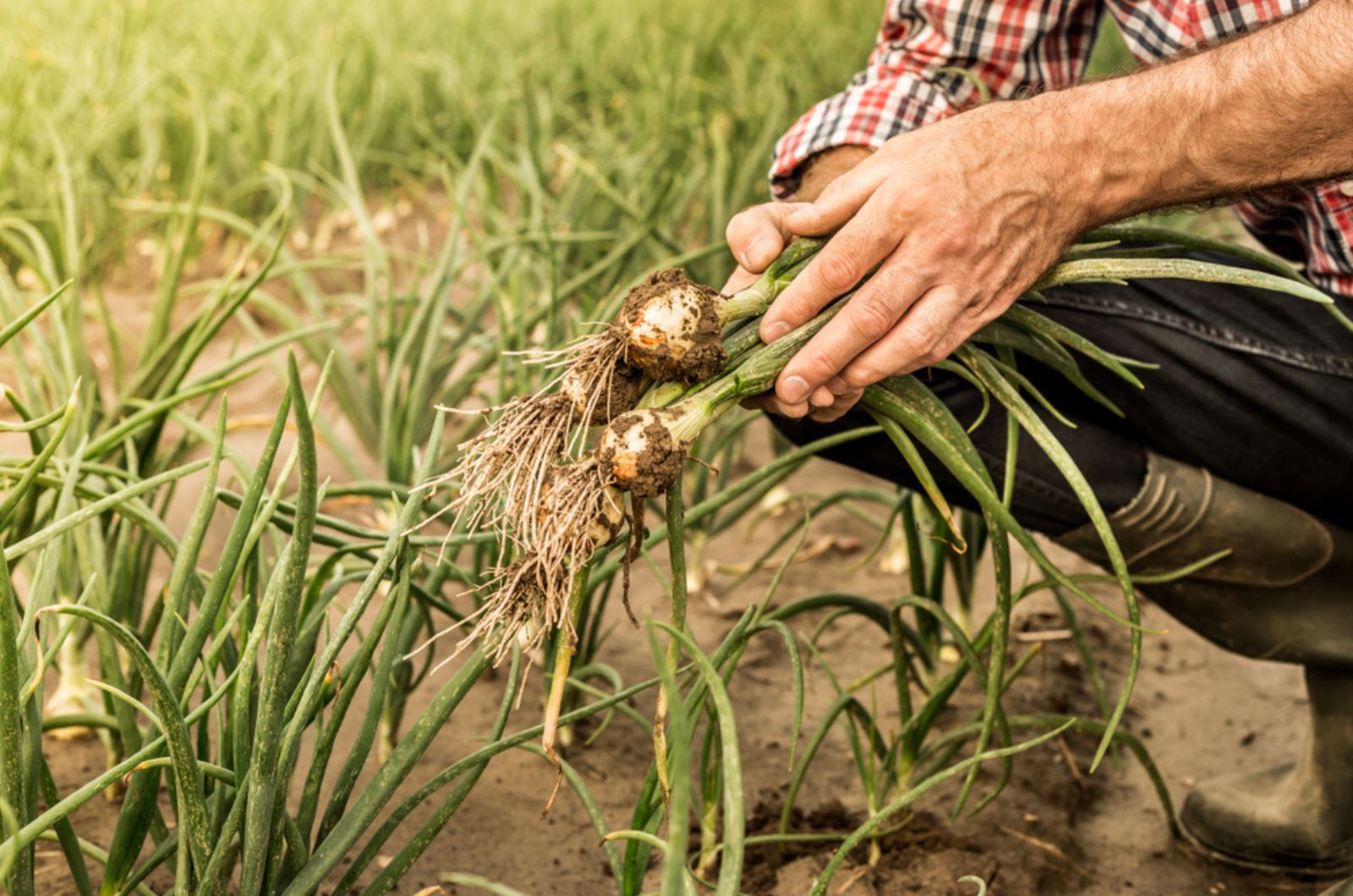What is a garden without onions? I mean these veggies have so many culinary uses and health benefits and, best of all, they’re easy to grow. Even if you don’t like the strong flavor or taste of onions, I’m sure you have someone who does.
If you already have them in your garden, you should know when they’re ready to harvest because some issues can occur if you don’t do it on time.
Don’t worry, I’ll show you when to harvest, why it matters, how to do it, and give you a couple of tips for long-term storage.
Let’s get started!
Why Is It Important To Harvest Onions On Time?
It may be pretty hard to determine if onions are mature enough to be harvested, mainly because they grow below the soil surface and we don’t really know what’s happening there.
Just for clarification, harvesting these veggies earlier won’t be fatal for the plant but they may not last as long as they could if picked on time. Additionally, their flavor may not be as intense.
But, it is dangerous to wait too long to harvest, i.e., doing so in the final onion growth stages. Your onions will be susceptible to sprouting and rotting and both conditions may be detrimental to the crop.
So, when to do it? Let’s see the answer.
When To Harvest
Many growers believe that the time of planting plays a crucial role in determining if onions are ready to harvest. From my experience, that isn’t really what you should rely on. Remember that weather conditions dictate the development of our veggies.
You may have heard the old trick that these veggies are ready to harvest if they have 13 leaves, which should indicate 13 rings in the crop. Honestly, I had only two onions with this number of leaves last year, and many actually had only 7 and were still mature enough.
So, instead of employing these, I daresay, odd techniques, here’s what you should do.
Observe your onion plant and when its neck (the part between the bulb and leaves) starts to soften and falls to the side, the final growth stage has begun.
If you want your onions to taste sweeter, you can add some water at this point. Those who want to store their onions can stop watering completely.
About two weeks after, you should notice lopsided stems and this is the best time to start harvesting. If you still have any doubts, take a look at the last developed leaf sheath; if it’s drying up, that’s it, you can pick your onions!
How To Harvest
Many will probably say, just pull your onions! Well, the way you harvest as well as the time of the day you do it also matters.
Always harvest in the morning to avoid harsh sun rays reaching the crops. When harvesting, be careful and till the soil around the crop and then take it out.
It’s not uncommon for these crops to be tough to withdraw so instead of pulling them hard, dig around them slowly. It’s safer to push them up from the bottom than yank them and damage the plant.
How To Store Onions
If you want to store your onions, you should first cure them. Spread them apart and keep them in a cool and dark spot with good airflow. They typically need 2-3 weeks until fully cured.
Remove the shedding skin and clean any dirt left. I don’t recommend storing cured onions in a refrigerator or putting them in airtight containers because excess moisture leads to rotting.
Mesh bags or cardboard boxes are the best choices from my experience because onions can last up to 3 months in them.
If you didn’t cure your onions, you should eat them right away or put them in the fridge.
That’s it! Enjoy harvest and, of course, eating!



